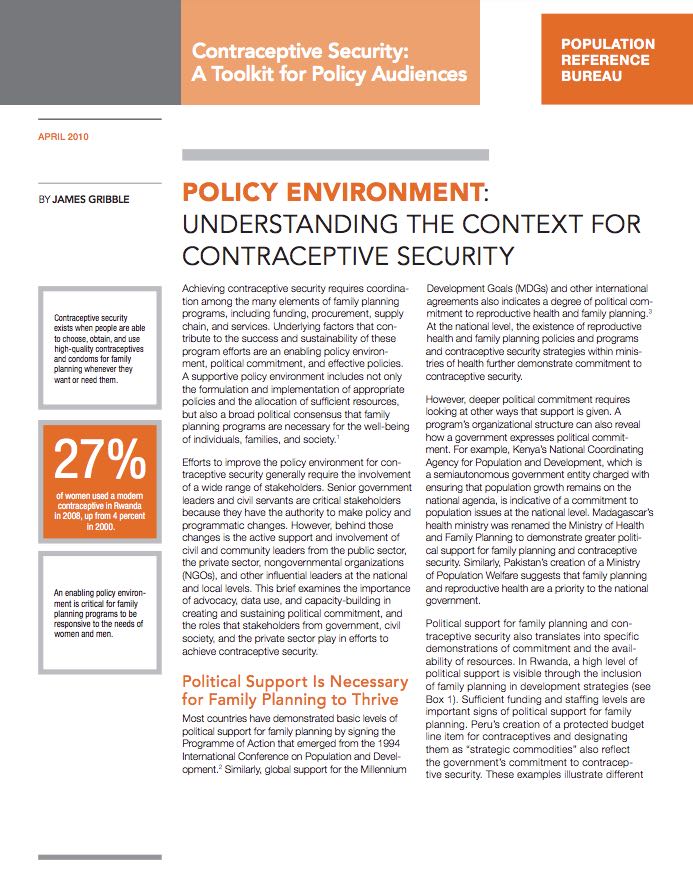
Policy Environment: Understanding the Context for Contraceptive Security
Date
May 27, 2010
Author
(May 2010) Achieving contraceptive security requires coordination among the many elements of family planning programs, including funding, procurement, supply chain, and services. Underlying factors that contribute to the success and sustainability of these program efforts are an enabling policy environment, political commitment, and effective policies. A supportive policy environment includes not only the formulation and implementation of appropriate policies and the allocation of sufficient resources, but also a broad political consensus that family planning programs are necessary for the well-being of individuals, families, and society.
Efforts to improve the policy environment for contraceptive security generally require the involvement of a wide range of stakeholders. Senior government leaders and civil servants are critical stakeholders because they have the authority to make policy and programmatic changes. However, behind those changes is the active support and involvement of civil and community leaders from the public sector, the private sector, nongovernmental organizations (NGOs), and other influential leaders at the national and local levels.
This is one of seven PRB policy briefs that make up Contraceptive Security: A Toolkit for Policy Audiences, a series designed to explain different aspects of contraceptive security to policymakers, program managers, media, and civil society. Contraceptive security exists when people are able to choose, obtain, and use high-quality contraceptives whenever they want or need them.
This brief examines the importance of advocacy, data use, and capacity building in creating and sustaining political commitment, and the roles that stakeholders from government, civil society, and the private sector play in efforts to achieve contraceptive security. The other briefs in the toolkit are:
- Contraceptive Security For Policy Audiences: An Overview (PDF: 558KB)
- Planning for Contraceptive Security: Start With SPARHCS (PDF: 699KB)
- Financing Contraceptives: A New Funding Environment (PDF: 694KB)
- Procuring Contraceptives: Options for Countries (PDF: 647KB)
- Supply Chain: Getting Contraceptives to Users (PDF: 758KB)
- Priority Actions and Recommendations for Contraceptive Security (PDF: 374KB)
James Gribble is vice president for International Programs at the Population Reference Bureau.

 ">
">